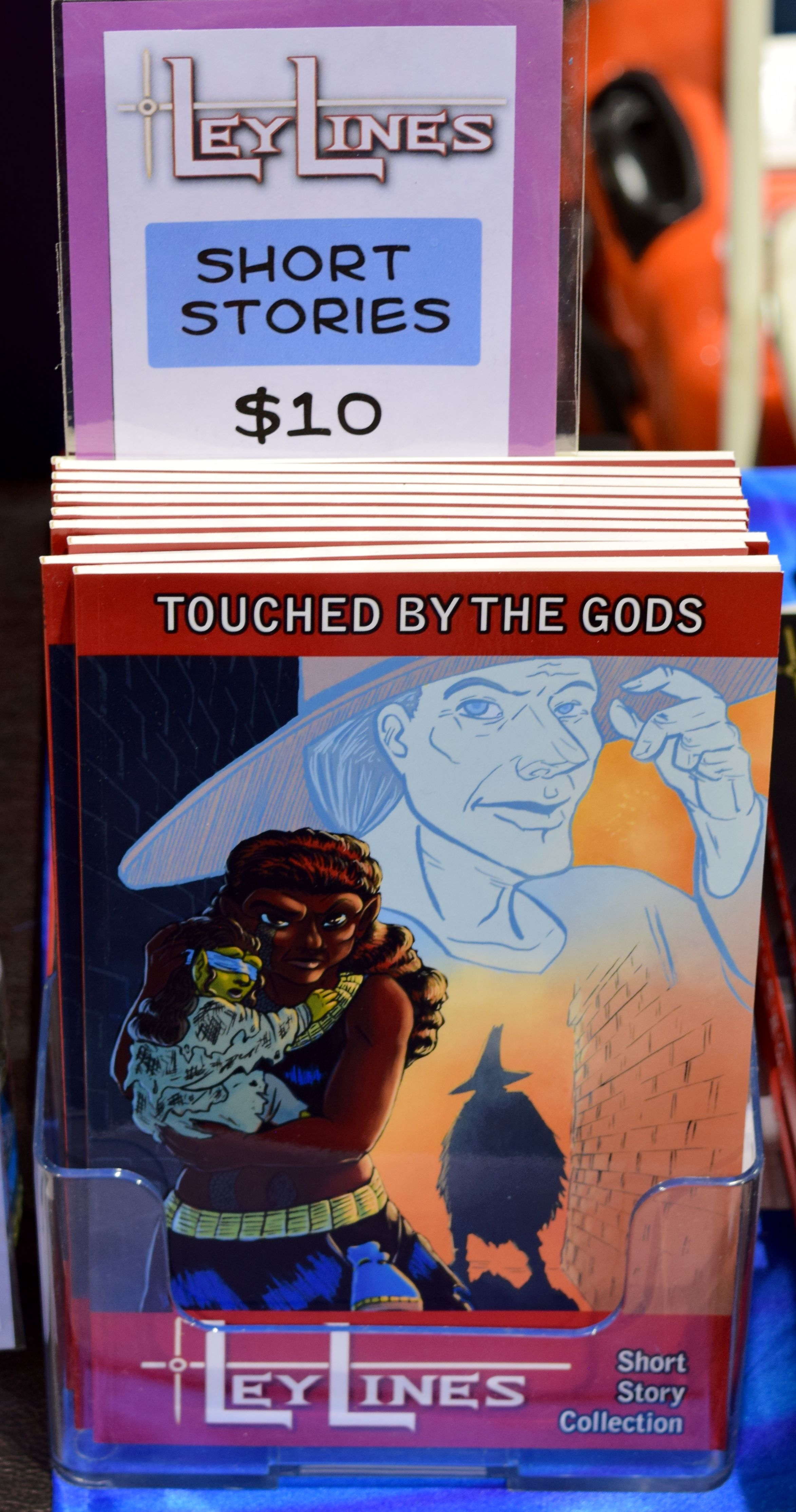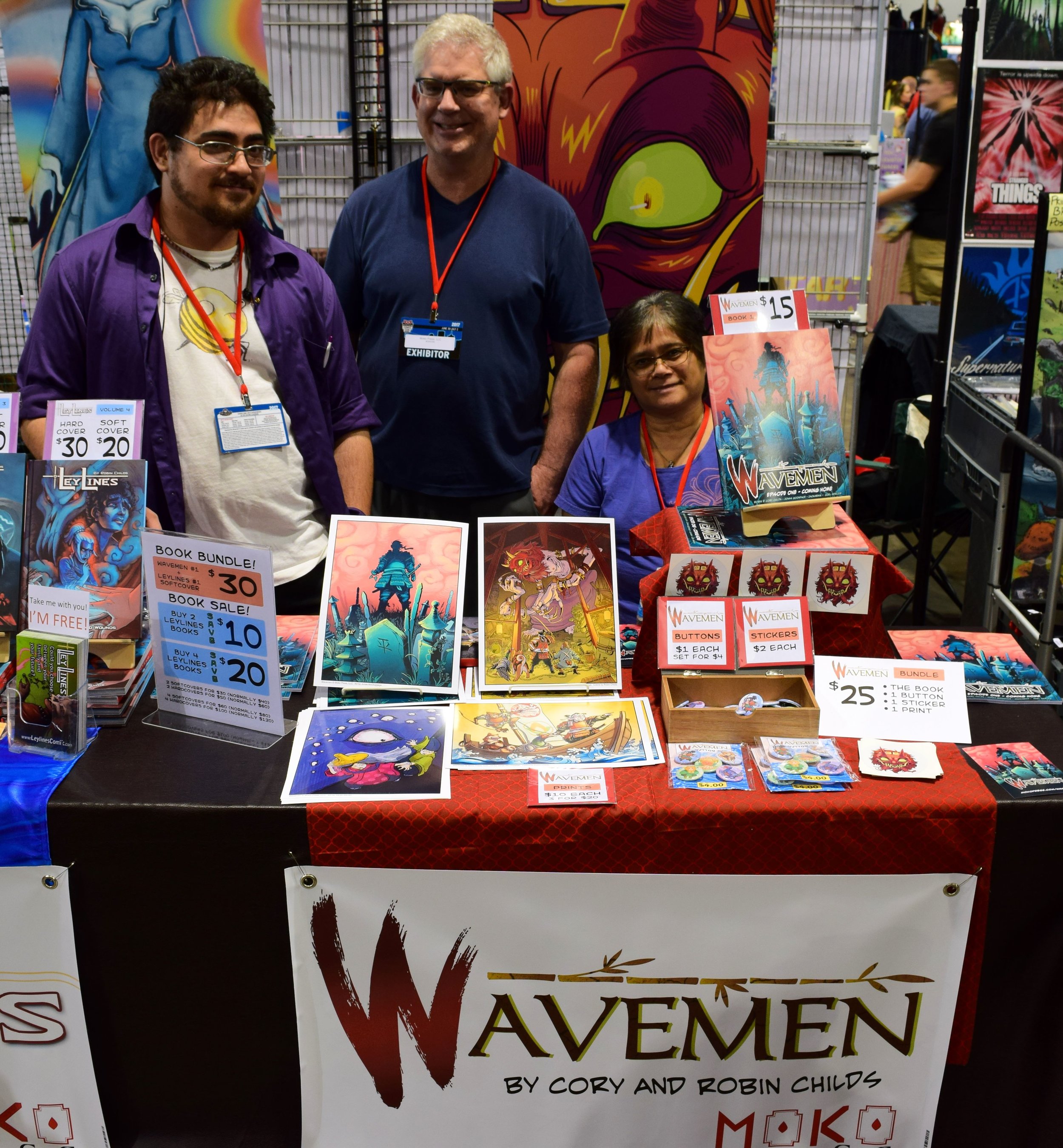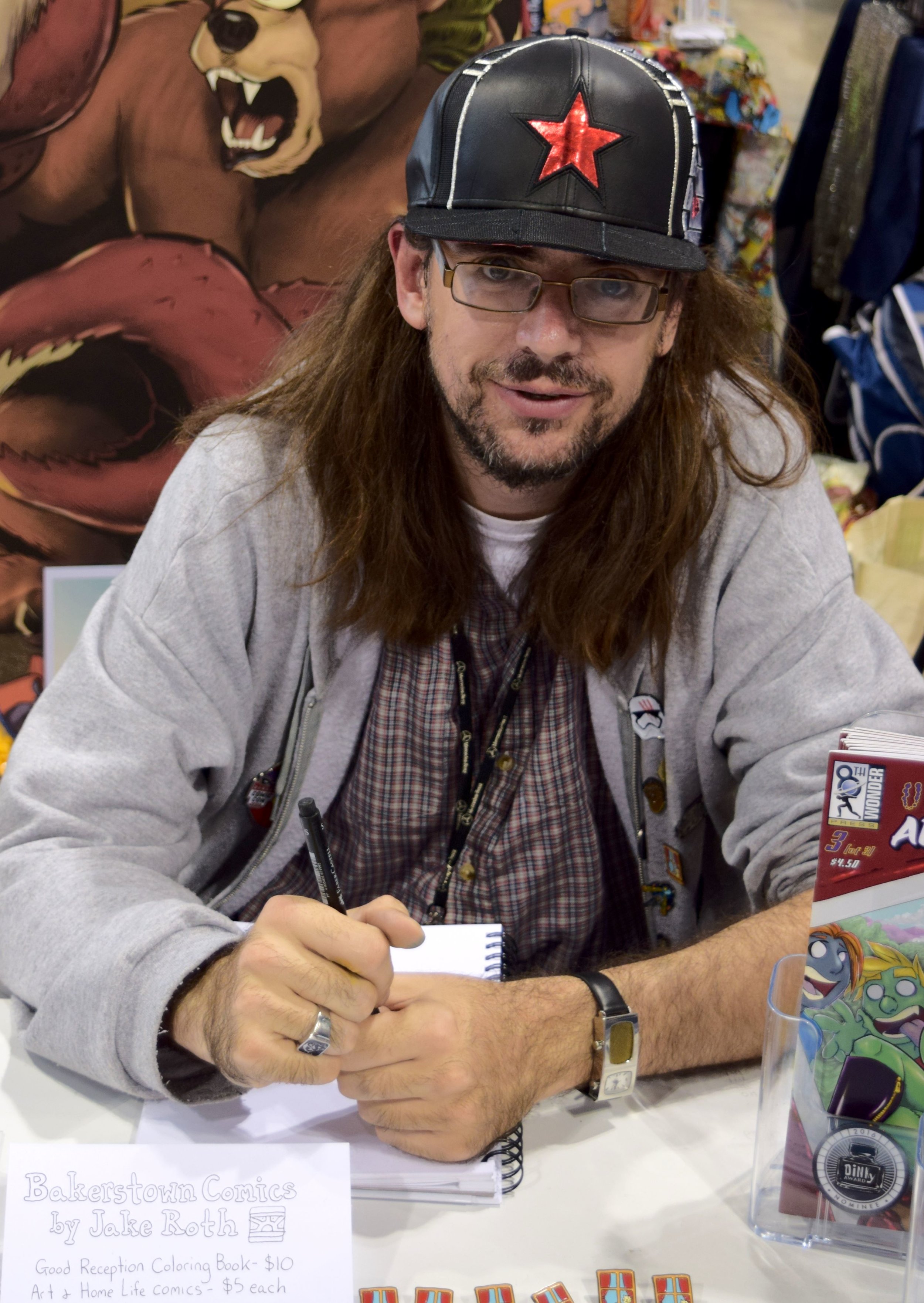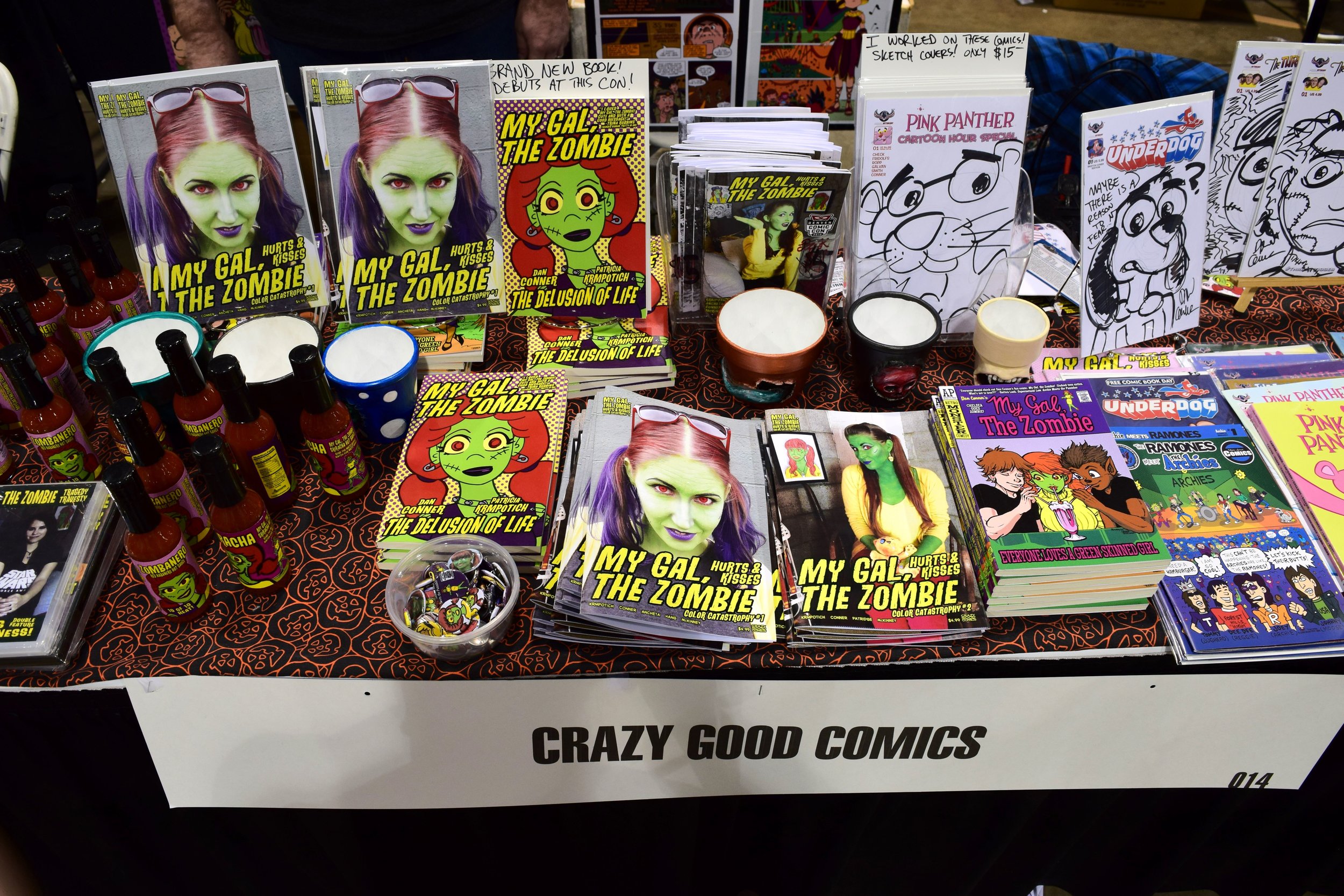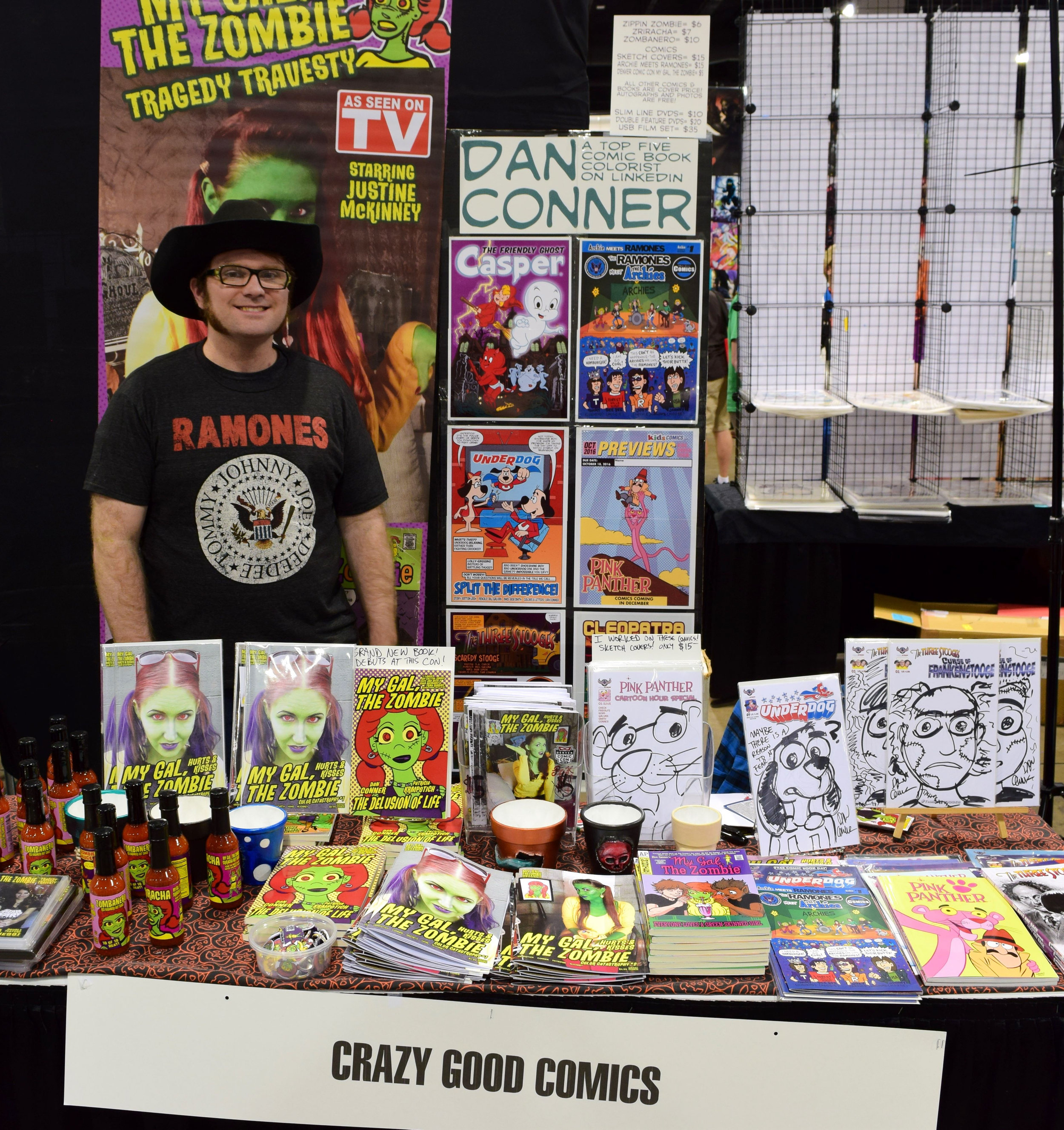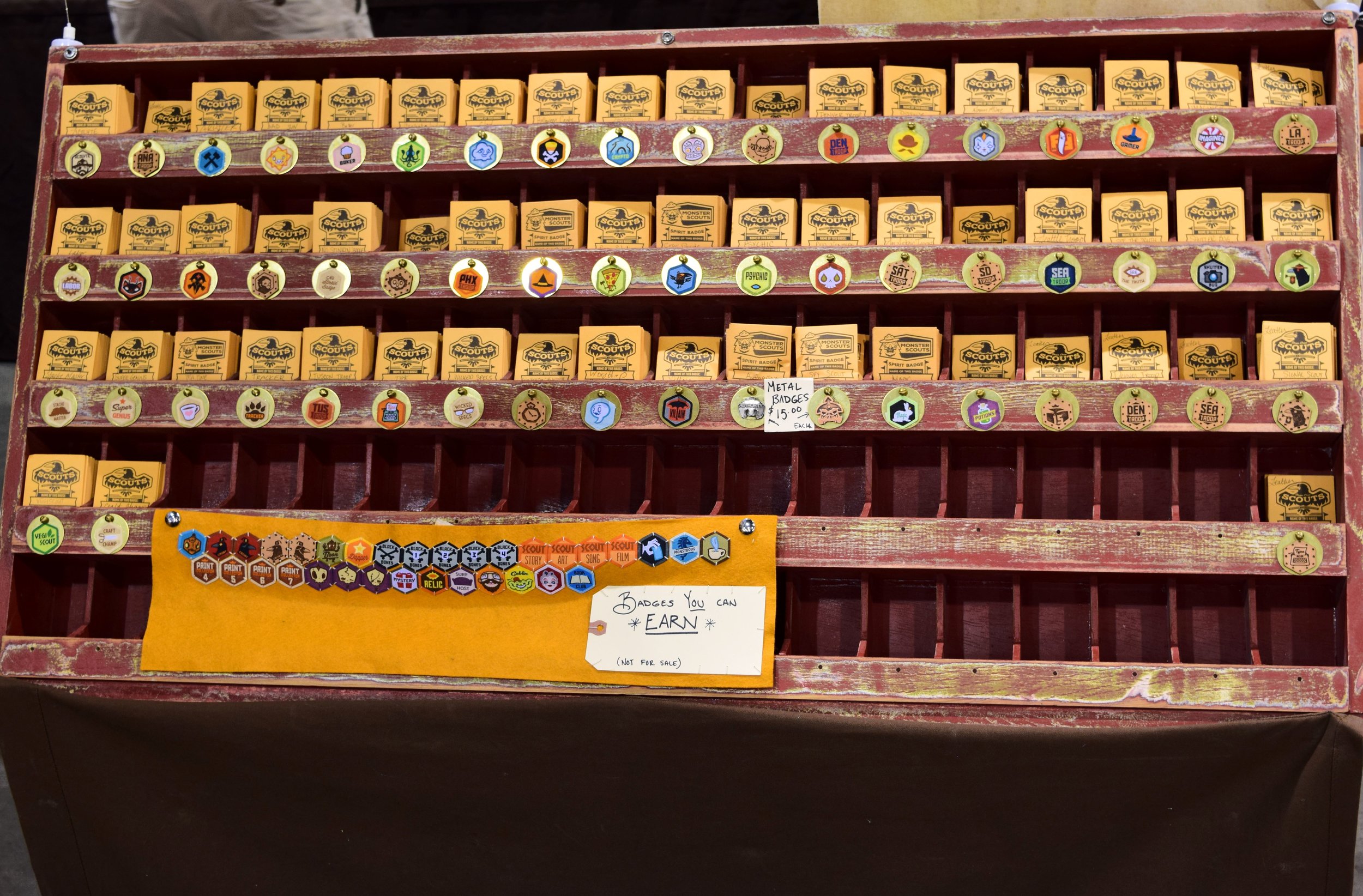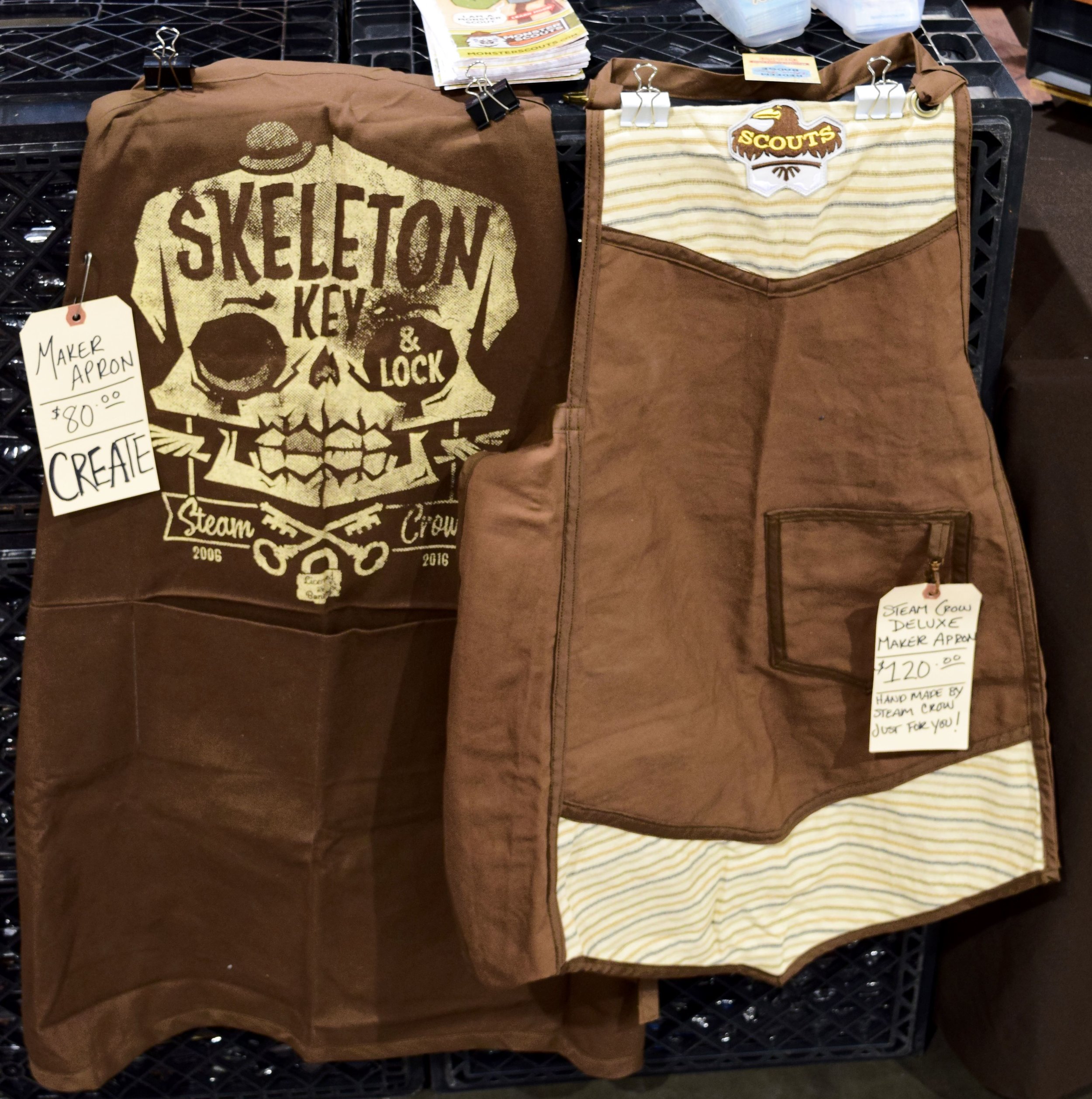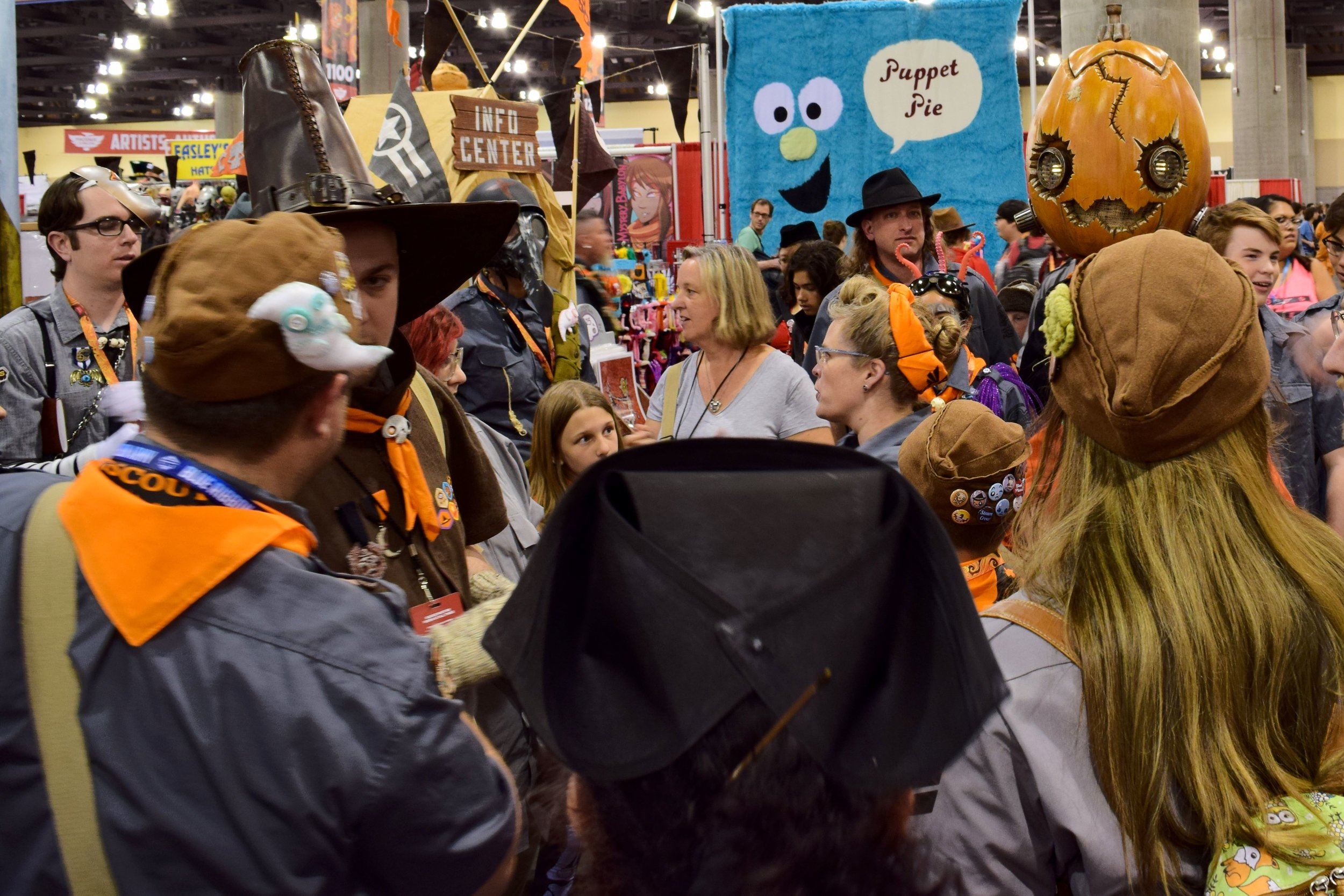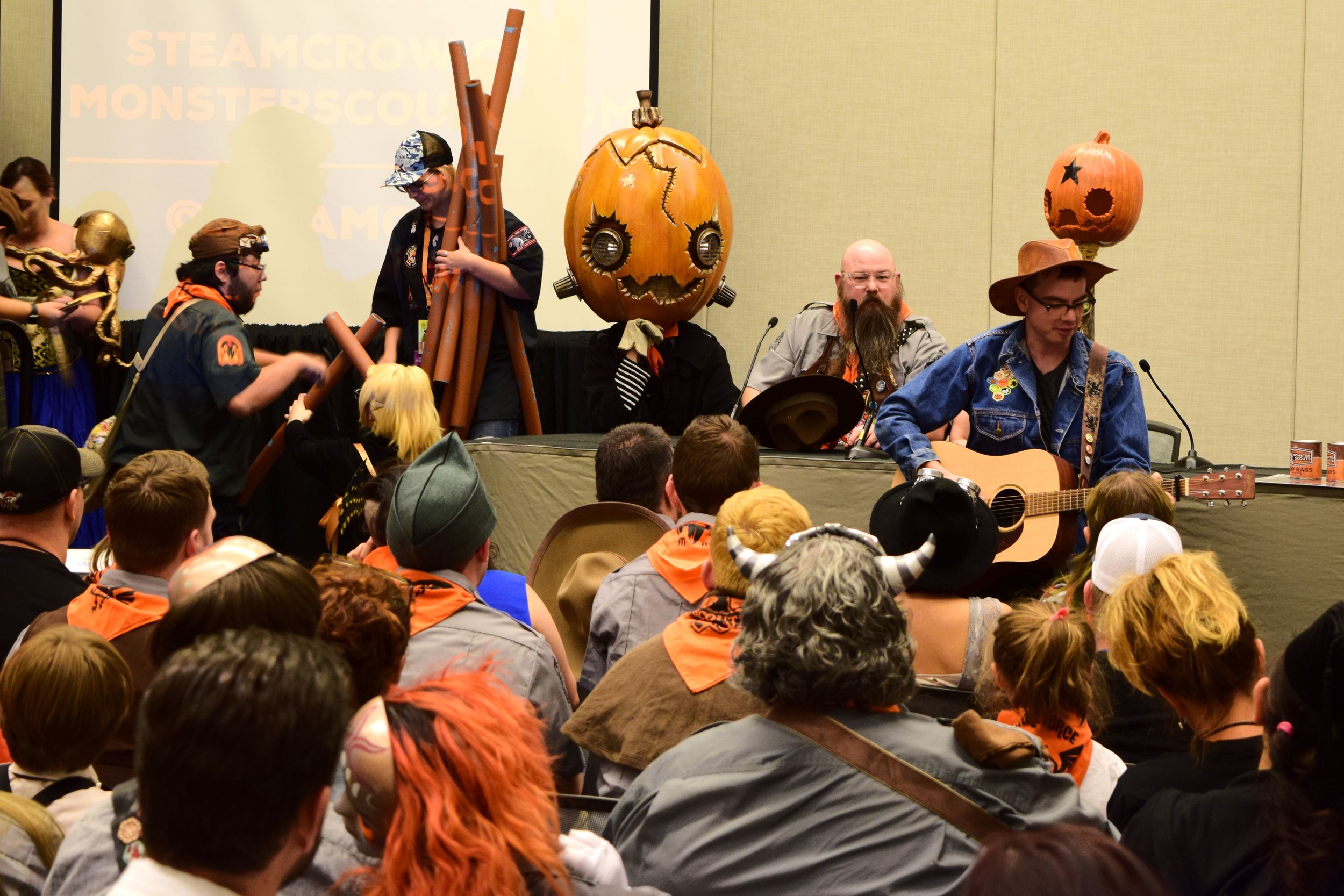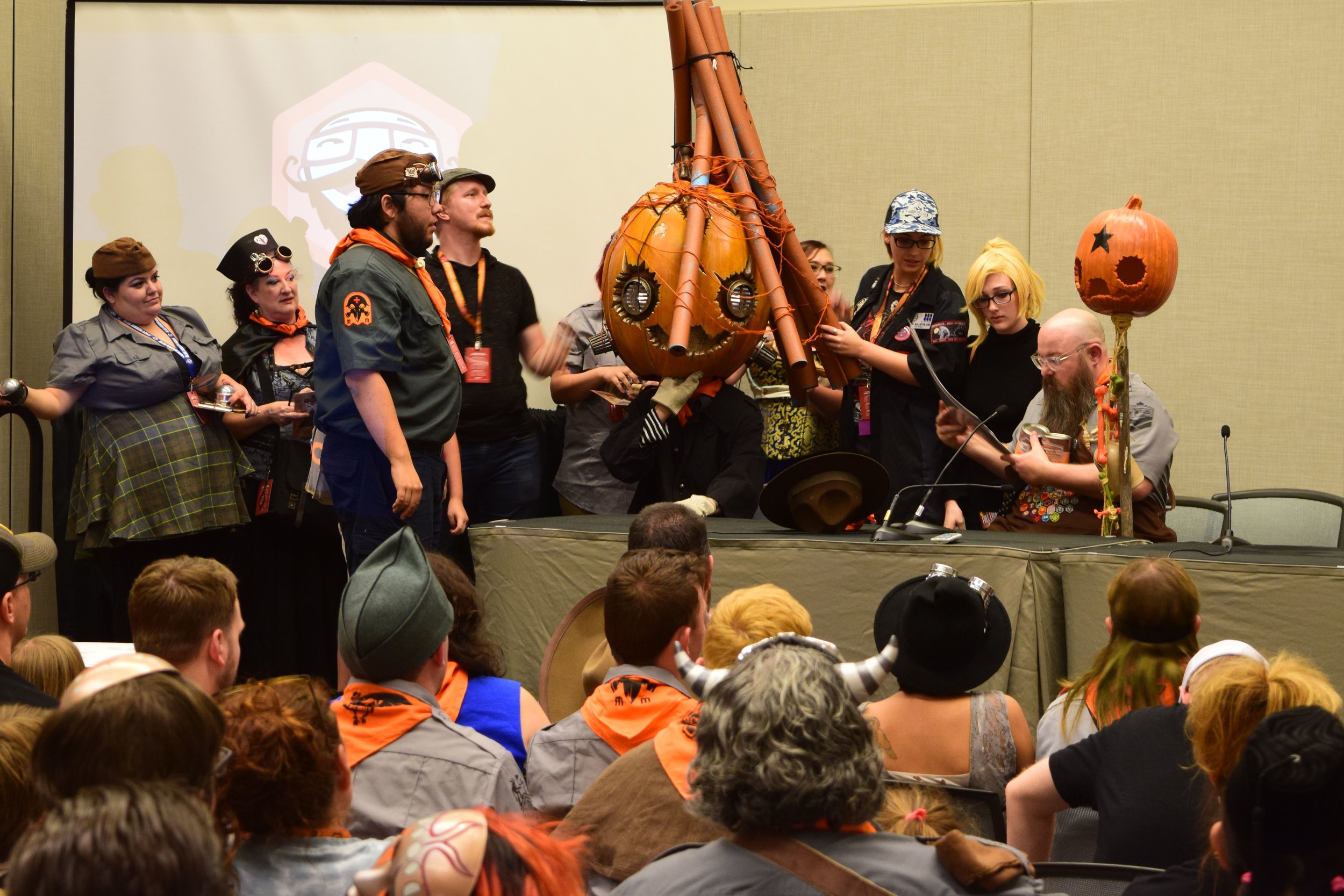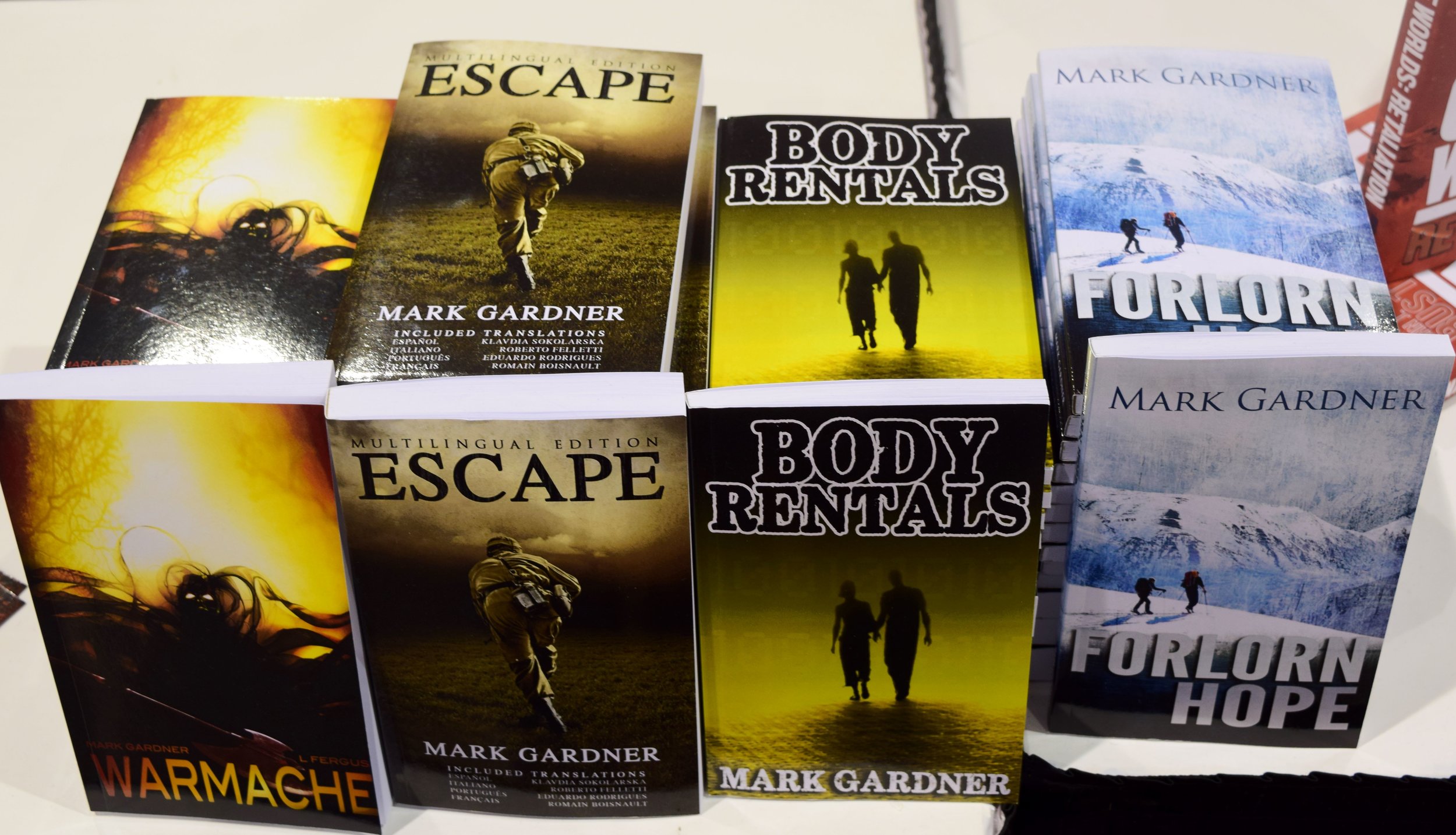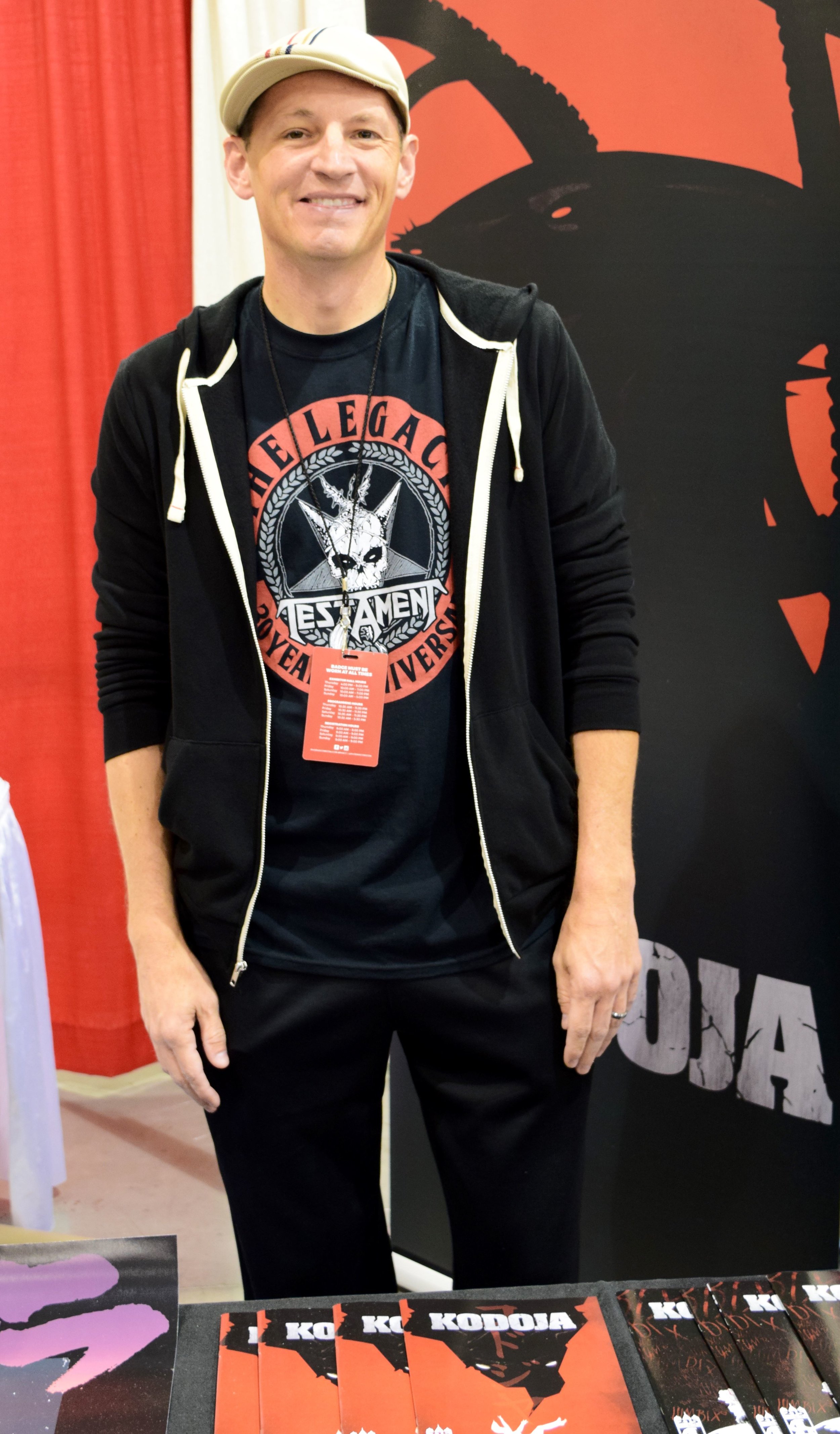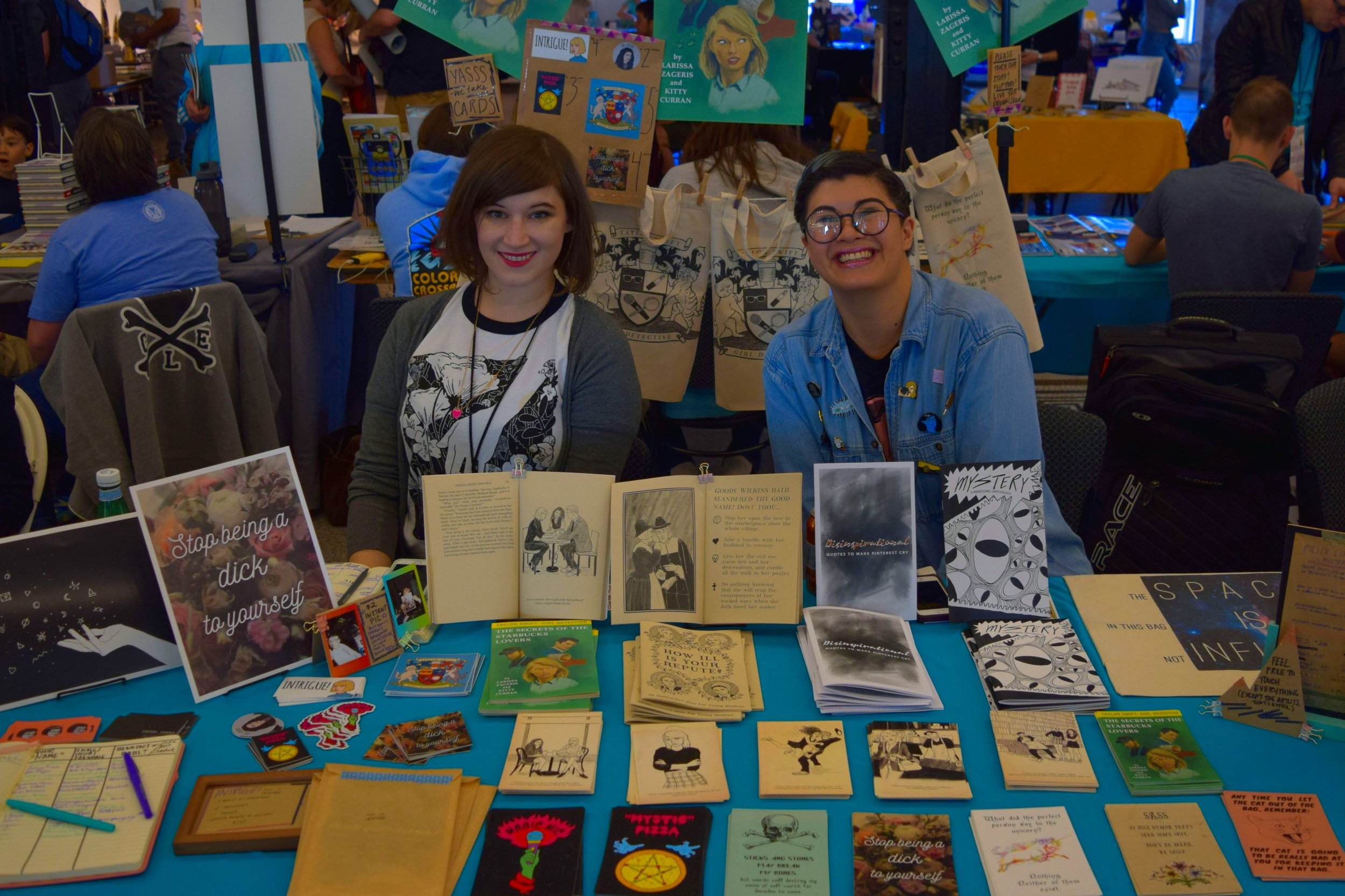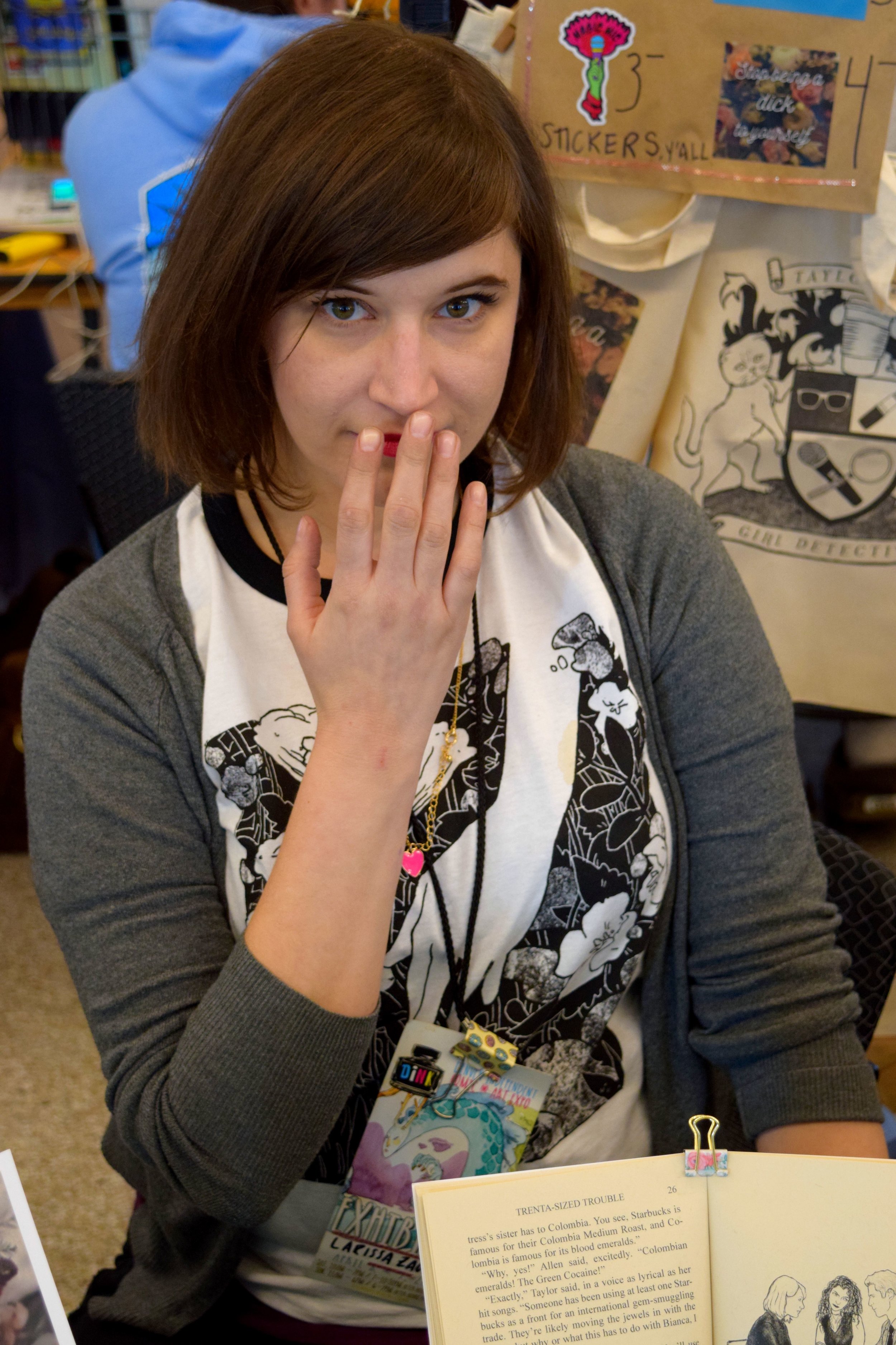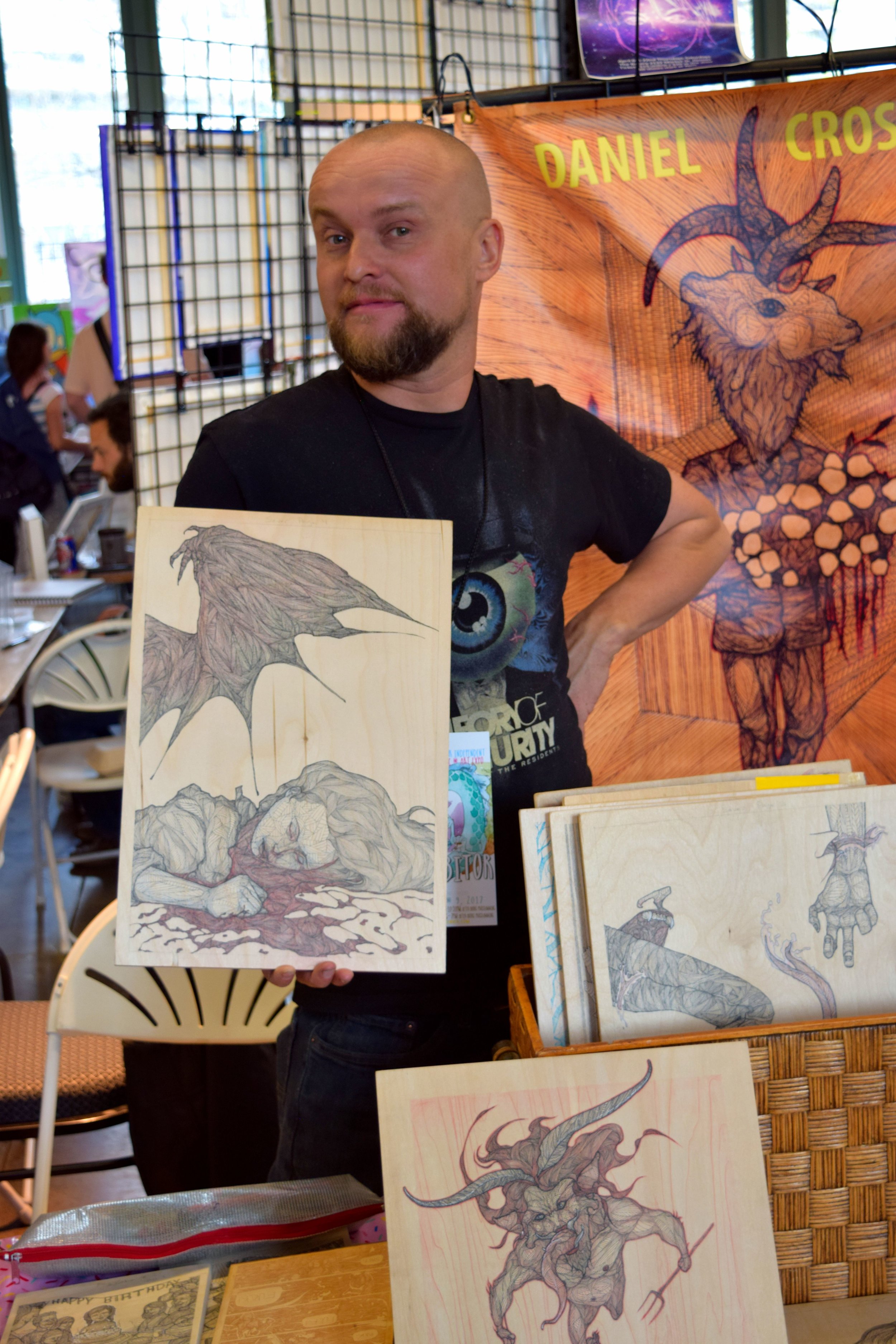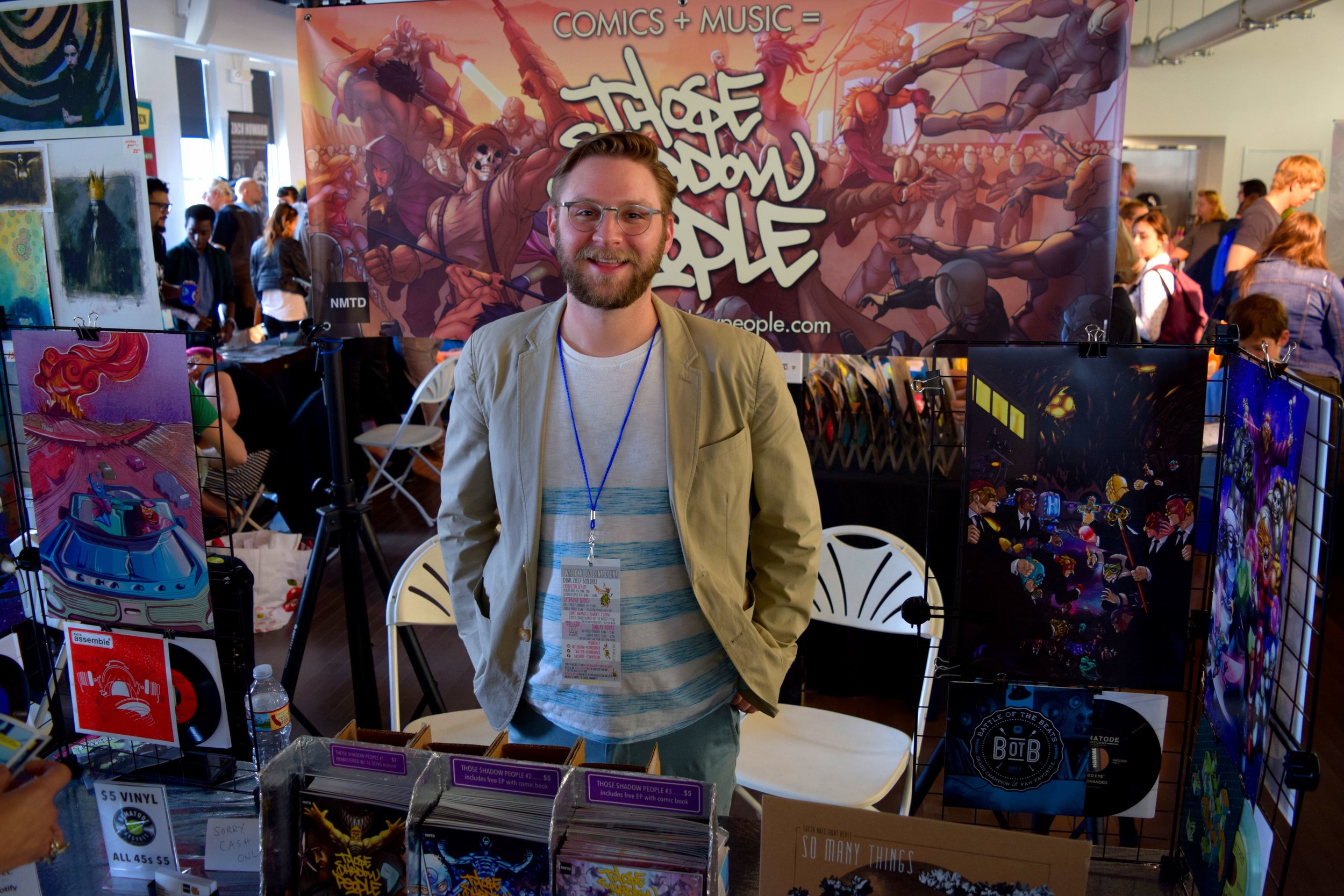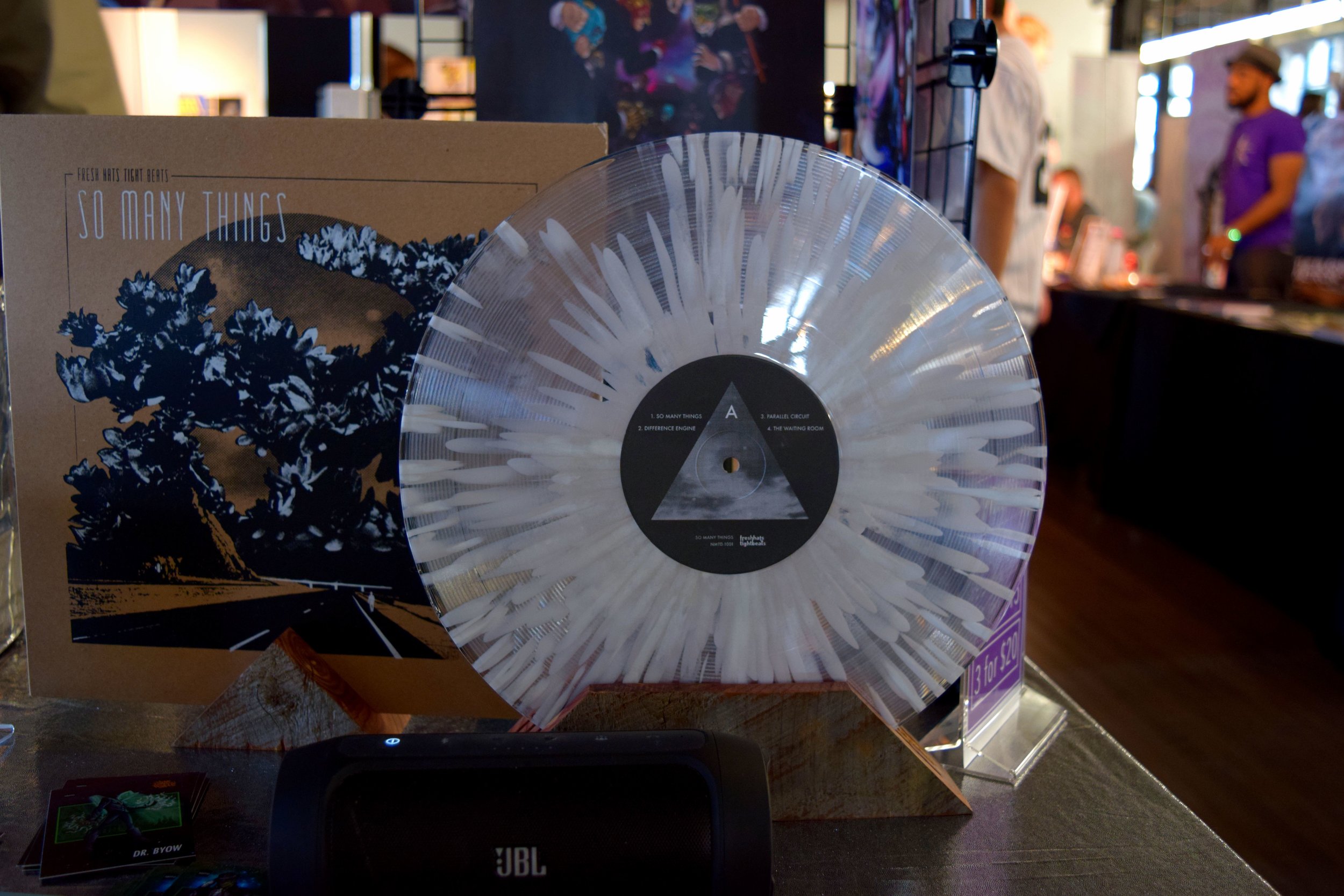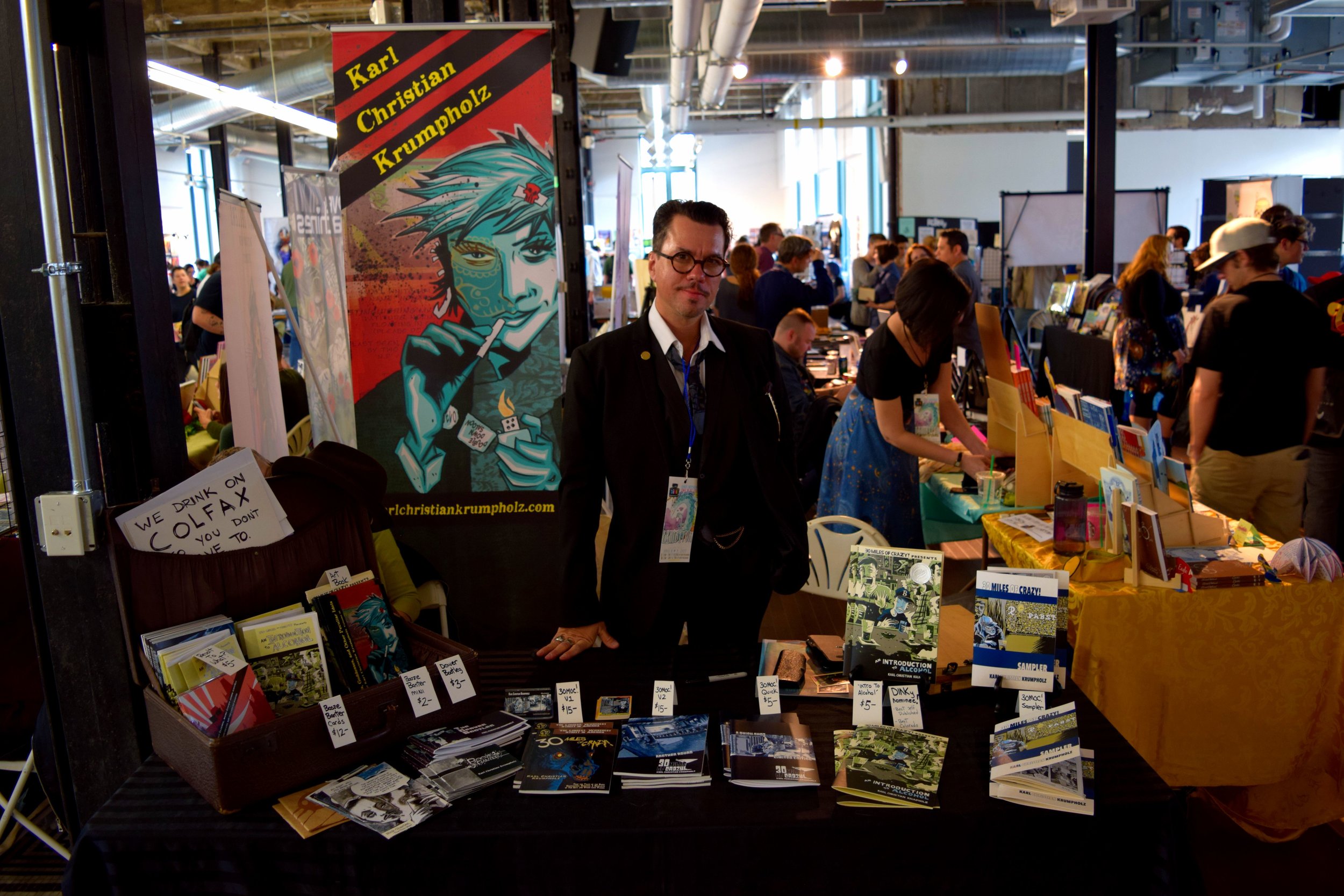An Interview With Chris Gore of Film Threat and Gemr.com (Phoenix Comic Con 2017)
/Written by SaraJean Greenaway
This interview took place on June 4, 2017 at Phoenix Comic Con.
Chris Gore at Phoenix Comic Con 2017. (1)
I was lucky enough to catch up with Chris Gore this year at Phoenix Comic Con 2017 for a follow up to last year’s interview. This man stays just as busy at a convention as he does in his everyday life! By the time I caught up with him on Sunday he had already been a part of 3 panels, one of those being the Film Threat Podcast - which I was able to attend this year. Chris had an all-star panel joining him that night featuring Jon Schnepp (Collider Heroes), T.J. Chambers (Cosplay Melee), Tommy Bechtold (The Middle), and comedian Paul Goebel (Beat the Geeks). Current events in the film industry were discussed and Chris Gore did a ‘rapid fire DVDuesday’ in honor of the five year anniversary of Attack of the Show going off the air. Then the guys discussed terrible movies as Chris handed out DVD’s of bad movies to random audience participants. Later, each panel member recommended a ‘must see movie that nobody’s ever seen.’ Click the link to listen to any of the free Film Threat Podcasts, including the one I saw (episode 18). The next day I was able to sit down and catch up with Chris to see how the past year has treated him.
SaraJean Greenaway: So I wanted to follow up with you and see how things are going. I can see from your table you have a new website or app that you are here promoting.
Chris Gore: Well there are two things: first of all, Film Threat re-launched since we last spoke, and second I was hired recently as the Chief Evangelist for a company called gemr.com. It's a website for collectors and it allows you to document your collection of things, share them with other people, discuss them with other people, and if you want to buy and sell stuff you can buy and sell stuff too. It's kind of like Facebook meets eBay.
Gemr.com flyers at Phoenix Comic Con 2017.
Film Threat sticker.
SJG: How did gemr.com get in contact with you?
CG: The CEO of the company is a guy named Tom Bennett. He had created this documentary and wanted to get my advice on it. I'll get all kinds of people and filmmakers who want to ask me questions about that. But his day job is the CEO of Gemr. So he says, ‘Hey, do you think you would be interested in doing some consulting work for us or maybe giving us advice?’ and I said ‘Advice? I want to work for you! I want this to be my job. I want to work on a website where we're talking about toys all day and collecting Funko Pops and Star Trek and vintage cameras. And do you mean I get to hang out with nerdy people, and talk about nerdy things all day, and tell other people how cool it is?’ That's the job I wanted. Film Threat is my passion because I love telling people about weird movies you would never know about unless you spoke to me. Film Threat’s purpose is to suck the air out of the blowhards in Hollywood and bring them down to size while simultaneously letting you know about cool films and filmmakers you would never know about if you didn't read Film Threat. It’s about helping smaller independent filmmakers while throwing darts at targets in Hollywood. And I love doing that, but Film Threat is not the breadth of my whole interest. I also love coming to Comic Cons. I like coming to Comic Cons more than I like going to film festivals. I think there's definitely just a more creative vibe in terms of just sharing resources and whatnot and I love it. So Gemr sort of fulfills the nerd part of me that's into collecting and Film Threat is sort of the pop-culture and film aspect of me. So I am very fortunate to have a day job that is also a passion
A gemr.com flyer (front).
A gemr.com flyer (back).
A table full of gemr.com flyers at Phoenix Comic Con 2017.
SJG: That all sounds very cool! And you can actually sell your things on gemr.com too?
CG: You can sell things too. You can put stuff up from your collection and offer it for sale. I am someone who used to love eBay but it has since become so complicated that it's more for the professional seller. I am not a professional seller. Every once in a while I want to get rid of some things but I don't want to professionally sell things, I'm not a pro. So for me it's become overly complicated and too difficult to deal with. So this is really a collector community where you would be dealing with people who are also collectors.
SJG: What kind of collections can be tracked there?
CG: Absolutely anything. Vintage cameras, antiques, Star Trek collectibles, vintage Star Wars toys; you name it. If you collect it, you can find the club of other people who also collect it at gemr.com. So this is really a collector community we are dealing with, people who are all also collectors.
SJG: What do you collect?
CG: I've been a long-time collector, the first thing I started collecting when I was a kid was movie ticket stubs. I mean I collected comics right? Everyone bought comics and collected them, but after I saw the original Star Wars in 1977 I saved my ticket stub from going to see it. Since then I have saved every ticket stub for every movie I have seen, every concert I have ever been to, every event I have ever gone to that has a badge. Whether it's a film festival, or a comic con or E3, the Consumer Electronics Show; all of my badges from those events get put in the binders. Well, some of them are in binders and some of them are in bags. But it's interesting because you can see the history of the tickets, right? First there were these little cheesy ticket stubs; then they were the heat-sensitive tickets and now they are the ones that we print out as PDF's. But if I have the option to have physical tickets I will always pick that. I never get the PDF that you can print out because that doesn't create a memory. So one of the things I want to eventually do with my stubs is there's a coffee table you can get at Ikea with a glass top and I want to put my ticket stubs in there so you can see them. When I am at a convention like this, I always say I'm looking for the one thing that I must have but I don't need. Gemr.com is for that kind of collector. So Gemr.com is a great way to find people who are into the same things as you, this is a way to connect with those people. I'm lucky because I am a collector and I'm into collecting, so it's the perfect job for me.
Celebrities Poop and Film Threat stuff from Chris Gore at Phoenix Comic Con 2017.
Chris Gore at Phoenix Comic Con 2017. (2)
SJG: Well it must have been a pretty cool job working at Attack Of the Show as well.
CG: That was a fun job too. But that type of job (TV hosting) has kind of gone away. It's more migrated to YouTube, which I think is really interesting. On YouTube now a lot of the people seem to be inspired by Attack of the Show. Because on AOTS, we were all people who were experts in our own thing. Now you have a lot of people talking about movies on YouTube; we have a lot of people talking about video games and gaming on YouTube. I think AOTS showed people that they don't need to be a professional TV host, you just need to be passionate about your thing. So there's a bunch of people I watch on YouTube who talk about movies. A couple of my favorites are Alachia Queen is amazing, when it comes to comic books comicbookgirl19, and then also my friend Jon Schnepp who does Collider Heroes. John is not like a traditional TV host, he's just really passionate about things that are nerdy. I think Attack of the Show just showed people what they could do. When the show started in 2005, YouTube wasn't particularly sophisticated and was just about funny cat videos. Now it's all shows produced just for YouTube, and on a model that allows for people to make a living. You should checkout comicbookgirl19, Jon Schnepp, Alachia Queen, Jenny Nicholson and RedLetterMedia. I think Attack of the Show just showed people that we can get together with a camera, and talk about the stuff that we're passionate about. We don't really need Attack Of the Show anymore because YouTube replaced it in when AOTS went away in 2012. This is the 5 year anniversary of that, and I keep getting approached by fans of the show asking if there is going to be a five-year reunion. I don't think there will be. The only person who could put it together is maybe Kevin Pereira but I think there are certain people who wouldn't want to participate
Film Threat Sucks sticker.
Paul Goebel, T.J. Chambers, Tommy Bechtold, Jon Schnepp, and Chris Gore in the Film Threat panel at Phoenix Comic Con 2017. (1)
SJG: We can at least hope he tries (Chris laughs). Anyway gemr.com is now your day job but how are the Film Threat movie and website doing these days?
CG: So the website (filmthreat.com) finally relaunched. We fulfilled the Kickstarter rewards, which is way more difficult than one would think. The thing is, and everyone always makes this mistake, never underestimate the cost of postage. Postage is way more expensive than you would think. But I feel really good that the site is up and running. There are still some random Kickstarter rewards that are not fulfilled yet but it's things like people who paid to appear as a guest on the podcast, or other stuff like that, so that will happen throughout the year. We're still working on the app; we're trying to get the mobile version going. There's all sorts of little improvements to the site being made, it's updated daily and the Film Threat podcast is out every week. It was on Thursday, but we're switching it to Friday's. We did the live version here in Phoenix last night.
Now, the Film Threat documentary is going to take a couple years to get out for a number of reasons. First, we keep uncovering more footage from the time. Second, we need to have some kind of budget - because it's a 90s period piece, so we want to have music from the 90s in the film. When I say music from the 90s - if you recall - early 90s music with shit. It was boy bands and sugar pop garbage that I hated. We want more like Nirvana and the indie rock that all of us with the Film Threat staff were into, so we need money for that. Also, we're trying to coordinate the documentary and two books coming out all in the same year. It's looking like 2019 or 2020 is when all three will be out.
Chris Gore poses at Phoenix Comic Con 2017. (3)
Film Threat t-shirts and stickers at Phoenix Comic Con 2017.
SJG: There are two new books coming out as well?
CG: Yes. There's a book that I'm writing, which is called Film Threat Sucks. It’s a first-person account of doing Film Threat from my point of view. Then there will be a second book written by Robert St. Mary, an author from Detroit. He is doing a book called The Worst of Film Threat. The Worst of Film Threat will be a coffee table book that is going to have reprints of some articles and all the art from Film Threat. It will also have unpublished articles, material, and photos from behind the scenes. It will have interviews from anyone and everyone who had something to do with film threat history. It will be a whole telling of the history from multiple points of view, and it will be mostly photo based. So you will have your coffee table book, my book and then the documentary. For the documentary - it's too early to say anything - but we have some big filmmakers that want to be a part of it. I think in a month or two I will be able to announce who. For now, with the money that we got from the Kickstarter we did, we got our first round of interviews with people. We interviewed most of the people from the old days of Film Threat, like the early days. Then we talked to Todd Phillips, the director of The Hangover films. He started the New York Underground Film Festival and we (Film Threat) distributed The Best Of the New York Underground Film Festival on VHS back in the day. We distributed a bunch of Todd Phillips' old films that he made early on, before his Road Trip/Hangover days, so he's a part of Film Threat’s history. We really wanted this to be encyclopedic and I guess that's why it's taking so long, but the status of the doc is that it's in production thanks to the people on Kickstarter. So, thank you all.
A Film Threat Sucks fabric patch.
SJG: That all sounds pretty fascinating. I will admit I'm kind of intrigued by the coffee table book. I love looking through stuff like that.
CG: Robert did a similar book before. He did a book called The Orbit Anthology. Orbit was this underground zine. It was one of those free giveaways in Detroit. In LA it's the LA weekly, in Denver its the Westword. I'm sure Phoenix has one too. It's a free weekly that's underground, that has like sex ads in the back of it and ads for local businesses. They’re always very local based. But this magazine from Detroit was created by a guy named Jerry Vile. We worked together, that was like my first professional job writing for a magazine called Fun. Then from that he spun off Orbit. So I am in this book, this coffee table book about Orbit. Quentin Tarantino liked it and wore a t-shirt of the Orbit character in Pulp Fiction. There's all this weird history and Robert created this book around that history. When I saw it I said ‘Oh my God, I wish Film Threat had something like that, a coffee table book like this,’ and Robert said ‘Okay, let me write it’. I don't want to say it was as simple as that, but it was kind of as simple as that.
SJG: So it sounds like you've been keeping yourself very busy with all of this.
CG: Oh yeah. I like my day job and I don't mean ‘day job’ derisively like people say ‘my ex-wife’ or ‘my day job’. It's not like that at all. The stuff I'm doing with gemr.com is awesome. It's very creative. I'm doing a whole bunch of marketing initiatives that are fun.
Paul Goebel, T.J. Chambers, Tommy Bechtold, Jon Schnepp, and Chris Gore in the Film Threat panel at Phoenix Comic Con 2017. (2)
Paul Goebel, T.J. Chambers, Tommy Bechtold, Jon Schnepp, and Chris Gore in the Film Threat panel at Phoenix Comic Con 2017. (3)
SJG: Where can people reach out to you or where can people find you online?
CG: Just Google me (Chris Gore) or ThatChrisGore and you'll find me on everything. Twitter, Facebook, Instagram. That's also a cool thing about gemr.com, though. You can actually follow people on gemr. So if you follow me on gemr.com - I am ThatChrisGore on gemr - and if you follow me on gemr you can see my collections of stuff so you'll see my vintage camera collection, my collection of Star Wars stuff, Batman stuff and the cosplay stuff. I make cosplay stuff and then also just weird DIY projects.
SJG: I will be interested to see what stuff you have. I can't believe you have any time to upload anything at all to gemr with all this other stuff you were working on.
CG: I like to make it seem like a lot but really I am just consistent. I work on stuff a little bit at a time every day and eventually I'll finish a thing. I tell people who ask me ‘How do you write a book?’, I don't know, just write a thousand words a day for about 2 or 3 months and then you'll have a book. The average book is 60,000 words. Books - like those digital books on Amazon - some of those are only twenty or thirty thousand words, so they're not that long. But it's all about being consistent. I create a really long and detailed outline. My outlines are generally 15 to 30 pages and sometimes more. Then I will just say, this sentence represents 500 hundred words - and I'll write that. Then the next day I will write the next one. So really it's just consistency. There's this really good app, it's called Grammarly and it's a desktop application that you install. It will keep track of how many words you write on a weekly basis. I was finding out that just with Facebook posts, emails, chat and articles I had written I was writing 50 to 70,000 words on my computer on a weekly basis. So it's just about being consistent and persistent. Do it and you will achieve your dreams.
Encouraged by Chris, we created an account on Gemr.com and entered some of our private collection. You can see what we've got and follow us at norrinradd on gemr.
Chris Gore at Phoenix Comic Con 2017. (4)
Chris Gore at Phoenix Comic Con 2017. ()


























